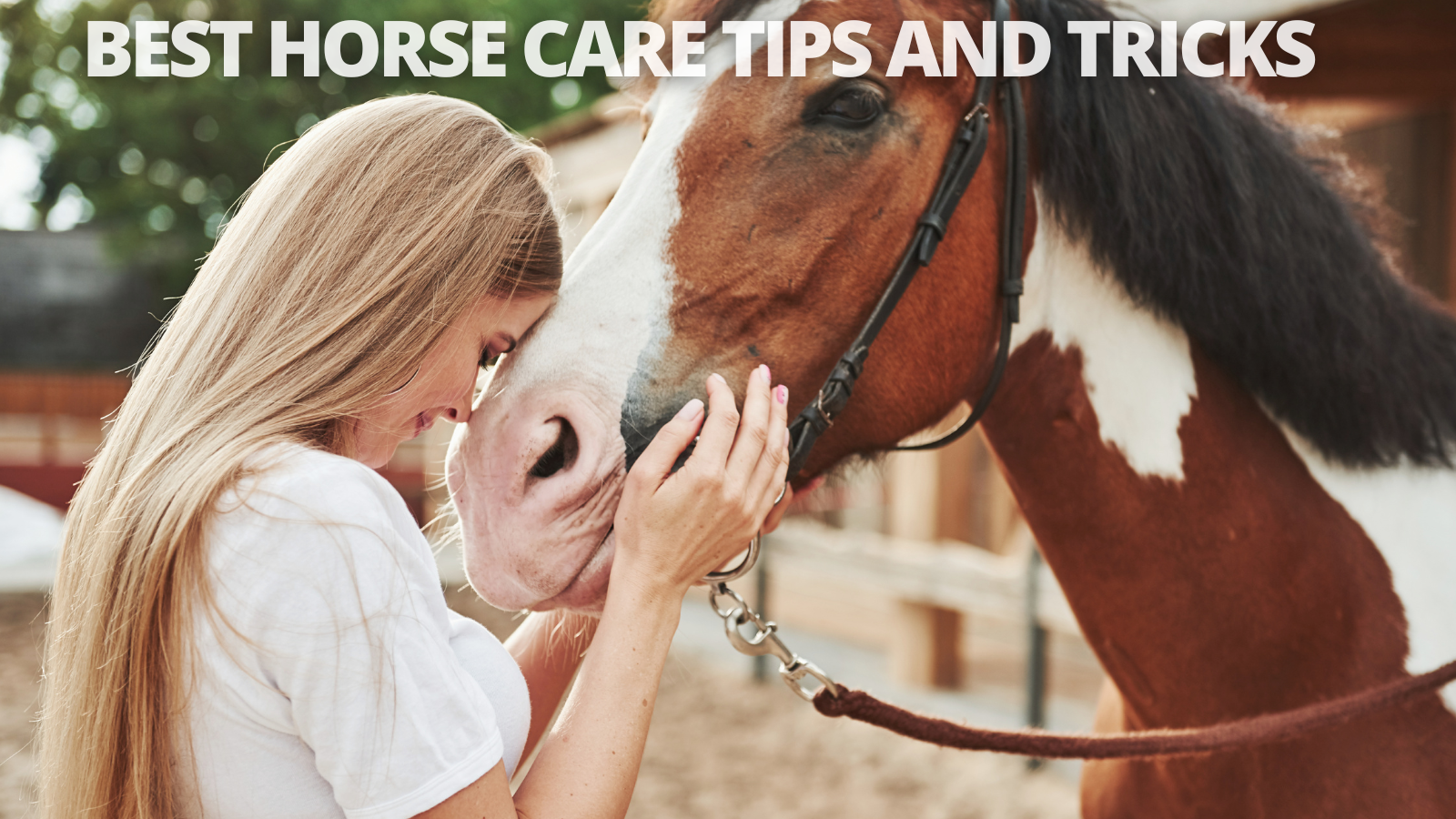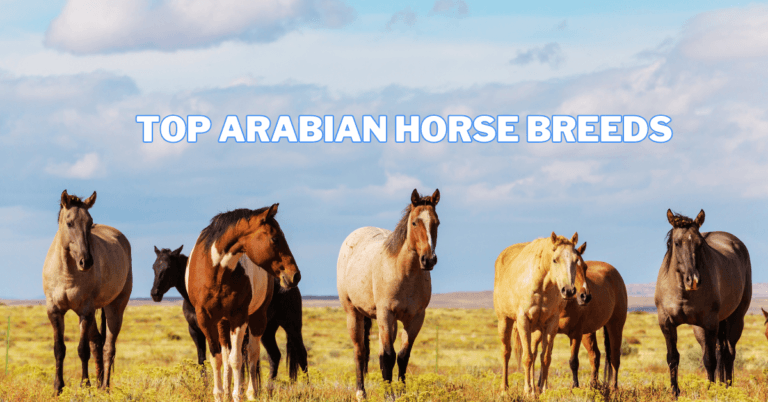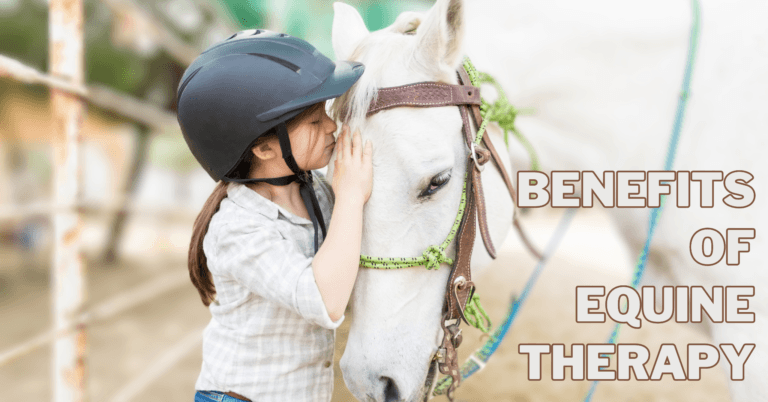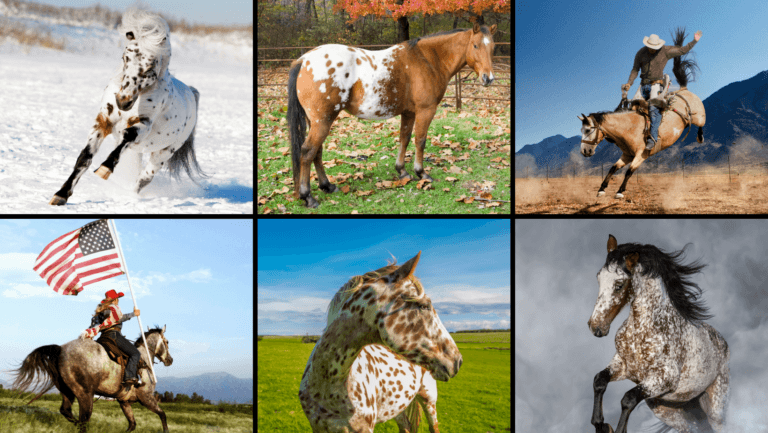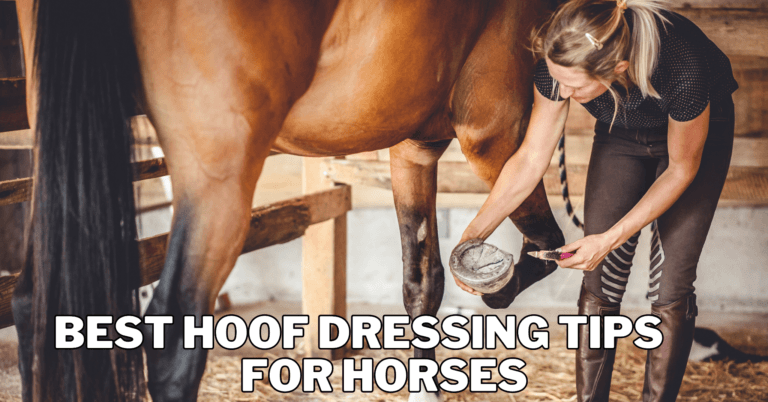Best Horse Care Tips And Tricks
Best Horse Care Tips And Tricks
For many people, owning a horse has always been a fantasy. Horses make excellent companions and develop close relationships with keepers. They can also serve as a basis for family ties and instill responsibility in younger family members. Here are some important things you should know if you're thinking about getting a horse.
History & Origin Of Horses
Archeological evidence suggests that horses were domesticated 6,000 years ago in the steppe regions north of the Black Sea, from Kazakhstan to Ukraine.
Numerous uncertainties surround the early evolution of the animal as it underwent domestication, despite extensive research over a lengthy period.
Whether domestication took place in multiple places or only in one is crucial. The expansion of domesticated horses throughout Eurasia or the question of whether local breeders captured their wild horses and added them to the domestic horse gene pool is related to this origins debate.
Modern genetic methods are used to study these subjects. However, various areas of the horse genome (i.e., the entire nucleic acid sequence of a horse's genetic code) have produced variable results.
A lot of individual diversity was found in the studies on mitochondrial DNA (mtDNA), which is only passed down from the mother. It was shown that wild horses from many different geographic places contributed to the domestic horse.
The mtDNA data unmistakably demonstrated many domestication locations, multiple mares in the initial populations, and the introduction of local wild horses' genetic material into the domestic gene pool as domestic horses spread.
There is no distinct mtDNA signature for modern horse breeds since the mtDNA data also revealed that the modern horse is a blend of old lineages that can all be linked back to an “Ancestral Mare” that lived 130,000 to 160,000 years ago.
However, research has shown that the domestic horse is predominated by a single, paternally inherited Y chromosome lineage, in which there is essentially little diversity.
A study on horses in southwestern China was an exception, as it discovered that some male horses in some southern Chinese populations had a Y chromosomal variation absent in all other studied breeds.
This variant could be a recent mutation or represent an alternative paternal lineage that persisted in the area.
The Y chromosome's lack of diversity suggests that the domestic horse has a fairly specific origin. However, the variations between maternal and paternal lineages can result from how breeders handle mares and stallions.
Due to stallions' sometimes-difficult behaviour, mares rather than stallions probably played a larger role in developing the domestic horse throughout history.
Additionally, the most selection is focused on men because, at the individual level, they can produce many more offspring than females. (In other words, it seems likely that a few obedient stallions were employed to impregnate many mares.)
The earliest horses, the canine-sized Hyracotherium, were hurrying through the forests that covered North America 55 million years ago. Most horses have spent more than half of their life as tiny woodland browsers.
However, as grasslands grew due to a changing environment, several new species emerged around 20 million years ago. The recognizable hooves and grazing diet we now identify with horses were present in some, but not all, as they grew in size. In the past, little and giant species coexisted, but only these species have persisted to the present.
Best Types Of Horses
While no horse breed is ideal for novice riders and owners, some species have characteristics that make them suited to this group of people. The pedigree should be less important than attitude and expertise. Horses from breeds like Morgans and American Paints are often more obedient and simple to train.
1. American Quarter Horse
English and Western riders like the American quarter horse, the country's most common horse breed. Because of their temperament, quarter horses frequently make wonderful first horses. They are excellent first horses thanks to their adaptability, agility, and reliability.
2. Appaloosa Horse
The American quarter horse is beloved by amateur and expert riders and is renowned for its athleticism, manageability, and agility.
It has the largest breed registry in the entire globe. It was first bred in the 1600s from English and Spanish thoroughbreds mated with regional varieties like the Native American Chickasaw horse. These horses are brilliant lights in the show ring and on the trail.
3. Arabian
The best of all horses is this one. The Arabian horse has demonstrated its ability to withstand the rigours of the desert. The horse's strength stems from the way he obeys the instructions of his rider.
Before they are prepared for the test of their abilities, white Arabians born dark must become light in colour. Few people have enough wind thirst to become drinkers of the wind.
When it turns white, the dark horse brimming with strength and wisdom, is prepared to soar across the desert currents. They are unique in that they adore their riders and regard them as unique individuals. They unquestionably show more affection than a lot of other horses.
Some historians claim that this custom originated with the Bedouins, who kept their horses in tents alongside their owners.
Many people believe that because they used to eat and sleep with their folks, this is where their love for others first developed. They are among the most adaptable horse breeds worldwide and extremely intelligent.
4. Morgan Horse
All types of equitation benefit from the grace and beauty of the Morgan horse. You'll realize that a superb saddle partner and riding horse is the Morgan horse. A breed with a distinguished history and heritage, the Morgan horse. Over two centuries of use for business and pleasure have allowed it to evolve. Nevertheless, it has astonishingly managed to hold onto the past two centuries.
Today, the Morgan Horse represents one of the most adaptable breeds of horses on the planet. Whether you're looking for a trail or pleasure riding companion, a competitive sports horse, or a competitive show horse, the Morgan Horse has all of these qualities and is suitable for all of these purposes.
5. Friesian Horse
In the pedigree register in 1913, there were just three Friesian stallions. At the time, it appeared like there was no hope, yet Friesian breed centers in the Netherlands have helped to ensure the survival of this extraordinary breed. It's a pretty rare breed with a very distinctive personality.
You may compare them to the Harley Davidson of horses because of their kind disposition.
There is not a single poor bone in these incredibly gorgeous horses' bodies, which are magnificent.
The Friesian horse rose to fame as a sport and leisure horse in the early 20th century. It was increasingly utilized, generally as a coach or a mount for riding, but in the 1980s, people started employing them in exhibitions and contests. They gained popularity over time and are among the most intriguing horse breeds on the planet.
6. Marwari Horse
The combat breed of horses is how people refer to them. Their ability to pick up even the smallest sounds has made them the most dependable ride on the battlefield.
There was a time when the vast majority of British forces' assassination attempts in the Indo-Pak peninsula were unsuccessful, shocking them. They sent assassins to kill Mughal generals regularly, but their covert spy was never seen alive again.
The Marwari horses Mughal generals were riding were to blame for their repeated failures. The combat breed of horses is how people refer to them.
Their ability to pick up even the smallest sounds has made them the most dependable ride on the battlefield. There was a time when the vast majority of British forces' assassination attempts in the Indo-Pak peninsula were unsuccessful, shocking them.
They sent assassins to kill Mughal generals regularly, but their covert spy was never seen alive again.
The Marwari horses Mughal generals were riding were to blame for their repeated failures. Due to the sensitive nature of their hearing, Marwari horses used to turn their ears in the direction of the smallest sound when they perceived something approaching them, and their ear's revolution frequency increased.
7. Orlov Trotter
To meet the demand for a tough and quick horse, the Orlov breed developed in the late 18th century. These horses are among the most ferocious kinds in existence.
Additionally, they have become a representation of the Russian monarchy according to their illustrious history. They were recognized for the historic victories they helped their riders achieve in the most prestigious contests in the world. Since the 19th century, the Orlov Trotter has, without a doubt, reigned supreme on the track.
Characteristics Of Horses
You may establish a successful relationship with a horse by being aware of its personality, qualities and physical features. Additionally, knowing your horse's thoughts will help you during training, making this knowledge priceless.
1. Prey Animals
Because they are prey animals, horses are constantly on alert for dangers. The majority of horses are readily scared by something that we might not even consider to be scary.
It's crucial that you, as the rider, teach your horse not to be terrified of these things and desensitize it to noises so that it won't jump anytime something loud happens nearby and run before you realize what's happening.
2. Temperature Regulation
During exercise, horses produce a significant amount of heat. Like people, they lose heat through evaporative cooling, typically sweating.
Evaporative cooling, however, is useless in hot, humid weather because perspiration does not readily evaporate during these conditions.
Reduce the exercise on humid, hot summer days to prevent heat exhaustion. Training in the heat can eventually result in shock and dehydration. To avoid heat stress, drink enough water, eat a healthy diet with vitamins and minerals, and exercise moderately.
3. Always Alert
Your horse is attentive, on guard, and conscious of its surroundings. To hear a sound you might not have detected or even heard, your “buddy” will constantly aim its ears in different directions.
Horses also employ these ear placements and subtle gestures like swishing tails to communicate across great distances. The phrase “horse sense” may be familiar to you.
This alludes to the horse's acute awareness of the threats in its immediate environment. It aids a horse in remaining secure and avoiding dangers.
4. Sight
For horses, sight is their primary sensory input. The size of the equine eye, the largest of any land mammal, plus the fact that the visual cortex of the equine brain processes one-third of all sensory input, demonstrates the significance of the vision.
Instead of facing forward like humans, dogs, and cats, a horse's eyes are positioned to the side of the head.
Since most birds and animals must continuously look for predators like rabbits, they benefit from remarkable peripheral vision.
With just a few minor blind spots directly behind and in front of them, horses can see over a 340° arc in general without lifting their heads. Due to the horse's anatomy, these blind zones exist.
These blind spots are brought on by the horse's body (in the rear) and the broad forehead and nose (in the front) blocking the horse's eyesight.
Horses back up and lower their heads to see what is directly in front of them while taking a small step to the side to see what is behind them. When a horse sees a panoramic scene, each eye observes the scene independently, referred to as monocular vision. These images are transmitted to a cluster of cone-shaped retinal cells within a “retinal streak.”
The second group of cones provides binocular vision in front of the horse in an arc of 55 to 65 degrees. Horses can distinguish between different images more clearly than dogs but not quite as well as people because of the comparatively high number of cones.
5. Hearing
Horses' big ears are excellent at amplifying sound and detecting its direction. Horses can find several sounds simultaneously since each ear may independently rotate up to 180°.
A horse's emotional state can also be inferred from its ears. For instance, a horse's laid-back ears could signify anxiety, suffering, or hostility (in response to loud or unfamiliar noise).
Horses can hear sounds at higher and lower frequencies and generally have stronger hearing than humans.
Horses are adept at picking up on the high-pitched squeaks or crackles that signal a predator's sneaky approach.
Horses have age-related hearing loss, so older animals might not hear you coming as effectively as they normally would.
Horses have age-related hearing loss, so older animals might not hear you coming as well as they did when you were closer.
Ensure your horse can see you or is aware of your approach to avoid spooks.
Because ear infections, mite infestations, and ticks can all result in hearing loss in horses, it would be beneficial if you requested your veterinarian to check your horse's ears regularly.
6. Smell And Taste
The primary means by which horses know each other and people is by smell, which also conveys information about the outside world.
For instance, when two horses come together, they share breath, and stallions use fragrance to determine a mare's sexual state. Numerous chemical receptors exist within the mucous membrane of the equine nose's enormous interior surface area.
Again emphasizing the significance of the equine sense of smell, the surface area dedicated to scent detection is many hundred times bigger in horses than in people.
Through their sense of taste, horses appreciate their meal. Taste receptors are on the neck's tongue, soft palate, and back. If horses possess the four basic forms of taste is unknown.
They can at least tell sweet from salty. Horses are known to have a sweet tooth, enjoying foods like apples, carrots, and honey, just like people do. Horses have a reputation for tolerating items, including drugs, that most people find incredibly harsh.
7. The Equine Leg
Equine legs are made to move quickly over varied terrain. While the lower part of the leg serves as a springboard to lengthen the stride, the top portion of the leg is powerfully muscled.
An apparatus of tendons and ligaments called the suspensory appliance supports the leg. Along the rear of the lower leg, tendons can be felt running the length of the limb. Ligaments and joint capsules hold the numerous joints together and protect them.
Horses also possess a special anatomical structure known as the stay apparatus, enabling them to “rest” one rear leg while standing for extended periods on the other three. Horses can sleep upright for this reason. On their hooves, horses move forward and backward.
While the pastern bones are between the fetlock and the hoof, the cannon and splint bones are in the lower leg. The long, slim, flexible horse leg serves its role admirably, but it is also sensitive to damage. The lower limbs and hooves carry a huge amount of weight, which makes them particularly vulnerable to injury.
8. The Hoof
The horny protein keratin makes up the hoof wall, which descends from the coronet ring at the top of the hoof. Similar to how our fingernails emerge from the cuticle, this process occurs.
Equine feet have concave soles, and the frog has a flexible wedge of tissue that protrudes from the heel. The coffin bone, which is formed like the hoof, is located inside the foot, along with additional elastic tissue.
The frog and the sole protect its underside. At the same time, the robust tissues act as a spring to absorb impact in addition to bruises, infections, hoof rot, and laminitis, a dangerous inflammation around the coffin bone and coronet.
The hoof can develop various issues that result in lameness because it is subject to intense, repetitive pressure. So, equine husbandry and preventive medicine include hoof care as a key component.
9. Skin And Hair
Although it is not quite as sensitive, equine skin resembles that of canines and cats. The hair coat's primary purposes are to protect the skin and to assist control of temperature.
The hair coat varies with the seasons, with wintertime hair being longer and coarser than summertime hair. Horses can fluff their hair like dogs and cats can (using tiny muscles linked in the hair follicles to increase the quantity of trapped air for insulation). The skin also produces more oil (sebum) during the winter, which is insulation.
All that is required to maintain clean, healthy skin and hair is proper nutrition, daily washing and brushing with a curry comb, and irregular bathing.
All horse owners should watch out for skin conditions, which can be brought on by allergies, infections, scrapes, bug bites, parasites, or unpleasant chemicals. Signs can vary depending on the issue and the specific horse.
Often, the problem's location provides a hint as to its root. For instance, fly bites frequently affect the neck and ears, whereas the back is more likely to experience itchiness or contact allergies from the saddle or blanket.
10. Teeth And Mouth
Unlike dogs and cats, horses are herbivores and consume grains and grass. The front teeth, known as incisors, are made to grab and cut grass, but the back teeth, known as molars and premolars, are made for grinding.
Throughout their lives, equine teeth continue to grow; as the crowns wear away, new replacement material develops in the jaw. Horses have 24 deciduous (baby or milk) teeth; between six months and five years, 40 to 42 permanent (adult) teeth erupt to replace them.
Between the incisors and premolars, all male horses and some female horses have little canines. In addition, horses may have up to four wolf teeth, which are only ornamental premolars. Usually, as yearlings are being neutered, the wolf teeth are removed.
Healthcare Tips For A Horse
Many people have always wanted to own a horse. Horses make great companions and develop close relationships with those who look after them.
Whether you want to work with them on the ground or ride your horse, they are a source of activity. Additionally, they can serve as a basis for building family ties and instilling responsibility in younger family members.
Here are some things you should know if you are considering buying a horse.
1. Where To Keep Your Horse
Horse owners can board their animals somewhere or keep them at home for free. A horse requires a covered shelter, access to clean, fresh water, good-quality grass or hay, and, at the very least, a space cleaned of waste for exercise.
Even if a home has enough land to accommodate a horse, maintaining the property is important. So that your horse can eat and drink water is a lot of work.
The cost of boarding depends on where you live and the facility where your horse is kept. The degree of care the facility provides will also impact the cost.
Full-service barns offer daily feeding and stall cleaning but are more expensive than stables where owners handle these duties.
2. Environment
Horses require a clean place to live. If they are in a stall, the stall needs to be cleaned of any manure or pee stains at least once a day (ideally twice).
Horses can doze while standing, but they lay down when they want to sleep deeply, they lie down. Straw or shavings make excellent bedding because they absorb urine and offer a comfortable sleeping surface. Avoid using hazardous bedding materials like corn cobs and black walnut shavings.
Enrichment supplies can prevent boredom in horses that don't get a lot of turnouts (access to a dry lot or pasture for play).
Although socialization makes horses happier in turnout, it's still vital to introduce new herd members carefully and gradually to prevent injury.
3. Diet
Roughage, which can take the shape of hay or pasture, makes up most of a horse's diet. Horses need to eat an average of 1% to 2% of their weight in grass or hay daily to maintain their body weight. Small, frequent meals could protect them from colic or stomach distress.
High-quality hay is typically required because most meadows do not provide enough for a horse to eat year-round. If pasture is available, it should inspect to ensure no poisonous plants are present.
Additionally, some horses gain weight on lush grass and become vulnerable to diseases like a founder. For advice on food, talk to your veterinarian. A mineral salt lick and clean, fresh water should also be available to all horses.
A horse drinks 5 to 10 gallons of water daily, and if it's hot outside or the horse is exercising, it may need more. If hay alone is insufficient for calories, add some grains.
Since cattle feed contains hazardous compounds that could be fatal to a horse, it is crucial to give grain prepared specifically for horses.
4. Grooming
A crucial aspect of everyday maintenance, often known as husbandry, is brushing your horse and caring for its hooves.
Additionally, it helps the horse and caregiver develop a strong attachment. To keep the horse healthy, you will need specialized tools to maintain a high-quality haircoat and clean the hoof soles' nooks and crannies (“picking out the feet”).
5. Foot & Dental Care
Horse hooves need to be trimmed every six to eight weeks since they are similar to our fingernails. Depending on your horse's conformation and intended use, your farrier may need to install horseshoes.
Horses consume food by crushing up grass, hay, or grain. As a result, they have evolved teeth that change shape and continue to grow throughout a lifetime. Particularly on molars, uneven wear causes painful hooks and points.
This may affect your horse's eating capacity and potentially reduce life expectancy. Every horse should have its teeth examined yearly, and if necessary, the points should be rasped down (floated) by a veterinarian.
6. Preventative And Emergency Care
The availability of a veterinarian for medical care is crucial. Your horse will live longer and experience fewer health problems with vaccinations and parasite removal (deworming). Your veterinarian can assist you if your horse develops lameness or an emergency-care-required disease or injury, such as colic or a laceration. In the event of an emergency, such as a wildfire or the need for equine hospitalization, it is equally crucial to establish a strategy for transporting your horse.
7. Training
If you still have any energy after all of that care, you'll undoubtedly want to ride your horse. It could be beneficial to have your horse receive training or lessons.
You can hire a trainer to visit your horse if you board your horse at a facility that frequently has trainers on staff. Regarding your skill level, getting comments on your riding and your horse's performance can be crucial because horseback riding is a sport.
Overall, buying a horse is a serious decision that should not be taken lightly. But owning horses can be one of the most abundant choices you ever make for your family and yourself.
8. Let Him Be Social
Horses are herd animals that require friendship and develop social skills that aid in teaching them appropriate conduct. A young horse that turns out with an experienced old gelding will receive knowledge that is unequalled by formal education.
Consider acquiring your horse a companion, advises Beaver if you don't already have any horses or there isn't a spot where you can turn them out together.
Alongside him, stall a goat or donkey. She also advises that if you have access to an indoor arena, you can think about asking whether you and other owners can turn a few friendly and compatible horses loose in the riding hall while it's not in use. Additionally, your horse will have more time to move around and spend quality time with his pals.
Conclusion
While most horses are domesticated, some still roam freely. The feral horses are descendants of once-domesticated animals that have roamed freely for many generations.
These horses can find in herds all over the world. For instance, wild mustangs in North America descend from horses that Europeans brought almost 400 years ago. One of the best animals to own as a pet is a horse.
Horses possess a wide range of advantageous traits. They are gorgeous, smart, obedient, cordial, understanding, compassionate, even-tempered, loyal, and trustworthy.
Because pets have such a lengthy lifespan, you will have one for a very long time (25 to 30 years). The horse's long lifespan enables you to have a very close bond with them over time.
I trust you enjoyed this article on the Best Horse Care Tips And Tricks. Please stay tuned for more blog posts to come shortly. Take care!
JeannetteZ
Your Opinion Is Important To Me
Thoughts? Ideas? Questions? I would love to hear from you. Please leave me your questions, experience, and remarks about this article about the Best Horse Care Tips And Tricks in the comments section below. You can also reach me by email at Jeannette@Close-To-Nature.org.
Disclosure
This post may contain affiliate links. As an Amazon Associate and other affiliate programs, I earn from qualifying purchases at no extra cost to you. Read my full affiliate disclosure.
You might also enjoy these blog posts:
Best Cat Care Tips For Beginners
Best Steps To Grow Grass In Containers
Best Steps To Grow Mushrooms In Containers
Best Steps To Grow Ocra In Containers
Best Steps To Grow Drumstick Alliums In Containers
Best Steps To Grow Ylang In Containers
I did the keyword research for this blog
post in Jaaxy. Click on the banner
below and try it yourself for free.

